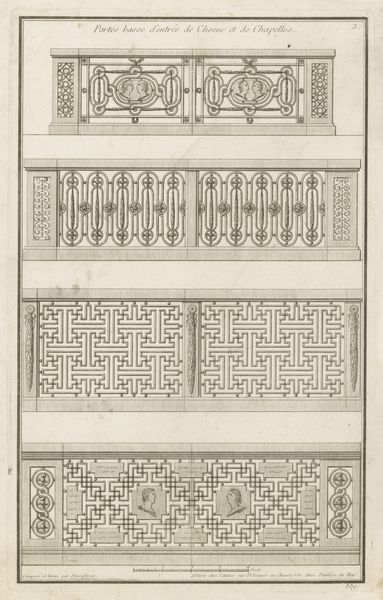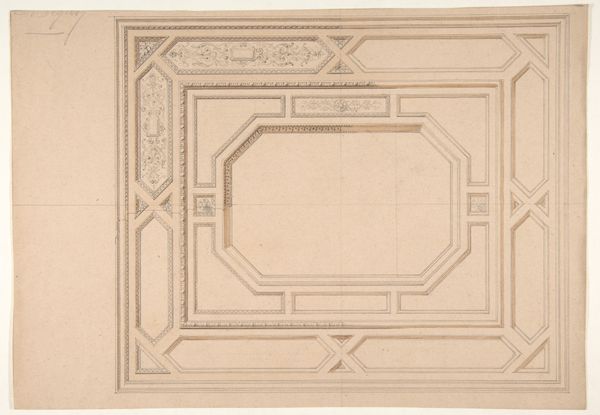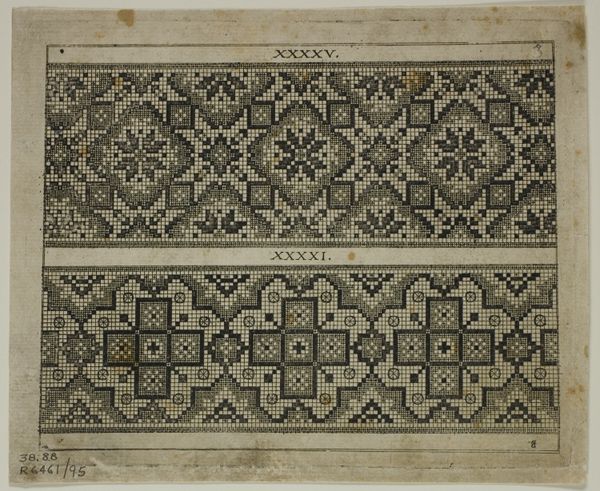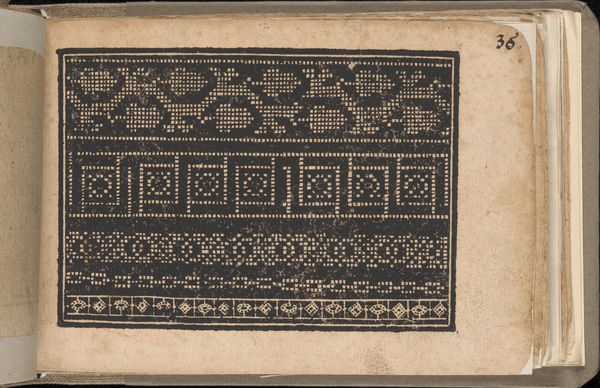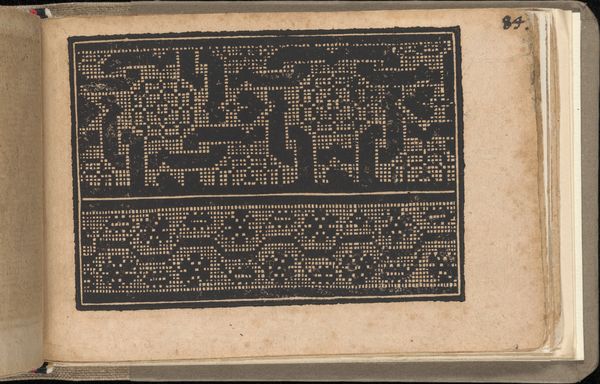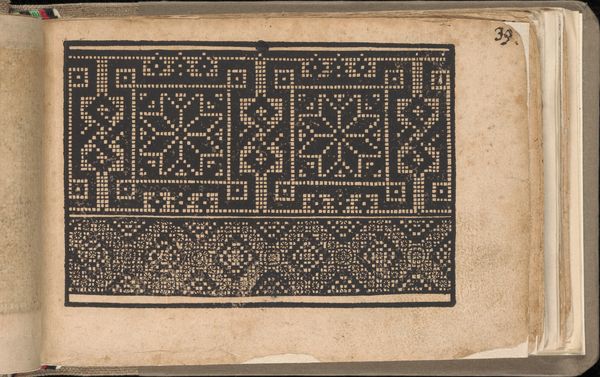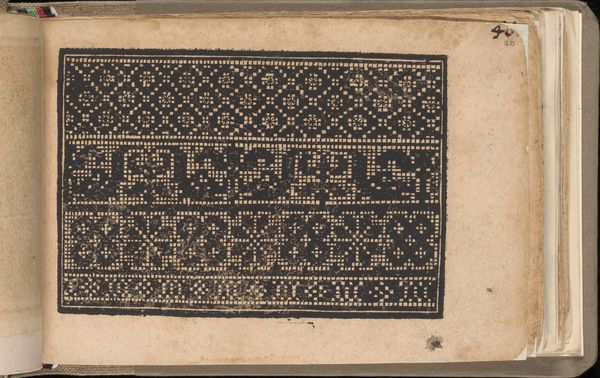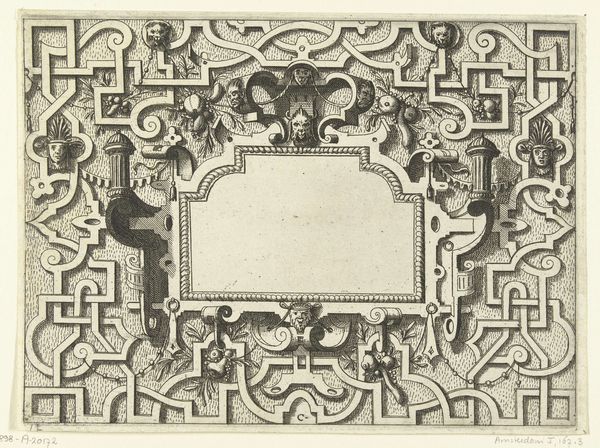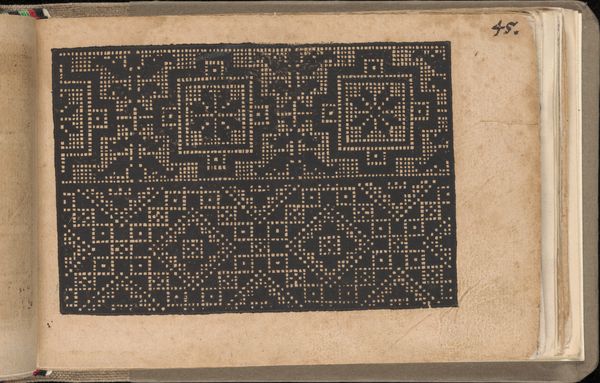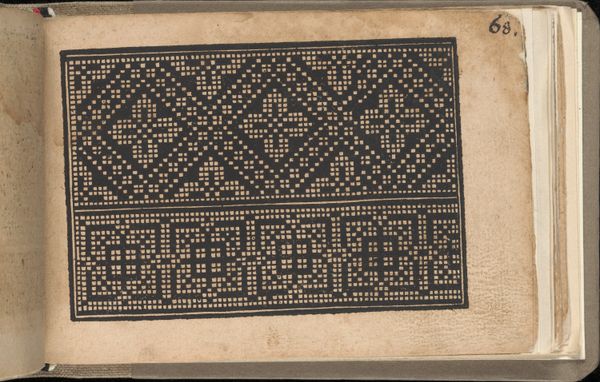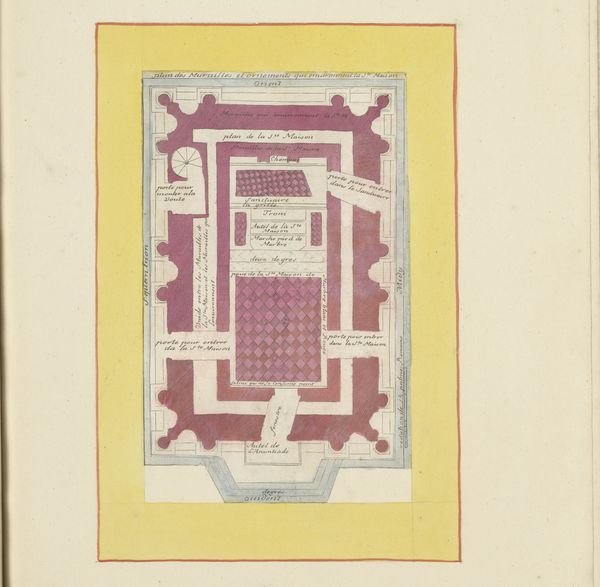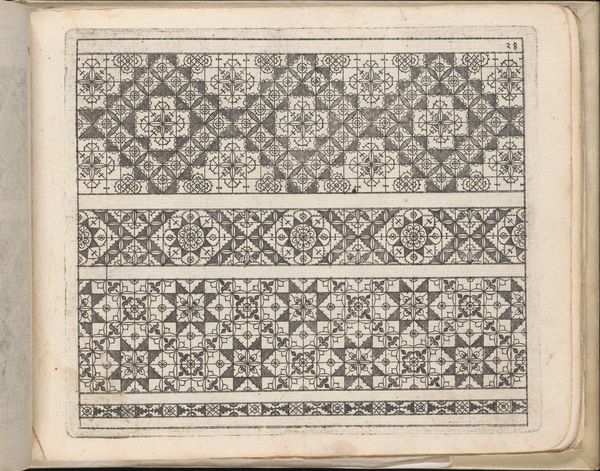
Part of a stucco vault from Hadrian's Villa, Tivoli 1769 - 1778
0:00
0:00
drawing, print, engraving, architecture
#
drawing
#
neoclacissism
# print
#
geometric
#
ancient-mediterranean
#
line
#
history-painting
#
decorative-art
#
engraving
#
architecture
Dimensions: 710 mm (height) x 955 mm (width) (plademaal)
Curator: This engraving by Giovanni Battista Piranesi, created between 1769 and 1778, depicts a section of a stucco vault from Hadrian's Villa in Tivoli. Editor: The precision of the lines is captivating! It has this serene, almost meditative quality. The geometric and floral patterns are so meticulously rendered, and seem to fit tightly together. Curator: Precisely. Piranesi wasn't just documenting; he was interpreting and idealizing Roman antiquity. His engravings were circulated widely and profoundly shaped the Neoclassical movement. Hadrian's Villa itself, rediscovered and excavated in the 18th century, became a focal point. The unearthing of places such as this influenced political and cultural ideas around empires. Editor: The visual language is striking. We have those repeated geometric motifs alternating with stylized botanical elements. Do you think he's imbuing these ancient forms with any particular symbolic meaning? Curator: Absolutely. The Neoclassical artists believed that the motifs of antiquity carried inherent associations with virtue, order, and rationality—values they sought to revive in their own era. This work reminds me how the rediscovery of classical forms was used to promote particular social and political ideals. Piranesi's role, both artist and archaeologist, emphasizes the intertwining of aesthetics and power during that period. He shaped perceptions through distribution via prints, to be further reinterpreted for contemporary life. Editor: Looking closer, those stylized flowers almost resemble heraldic crests, signs of identity and noble association, encased by the cold geometry around them. It almost reads as an allegorical tale of the era, where past motifs are reimagined for the here and now. Curator: Yes, indeed! These kinds of representations really highlight how much the artistic vocabulary has evolved. Piranesi’s interpretation speaks of his present day as much as it shows a mirror into a time long gone. Editor: This exploration really makes me ponder the layers of memory embedded in visual forms and how artists tap into them to shape our understanding. Curator: It is quite profound how the vision of antiquity informed our understanding of it and inspired cultural aspirations even now.
Comments
No comments
Be the first to comment and join the conversation on the ultimate creative platform.
